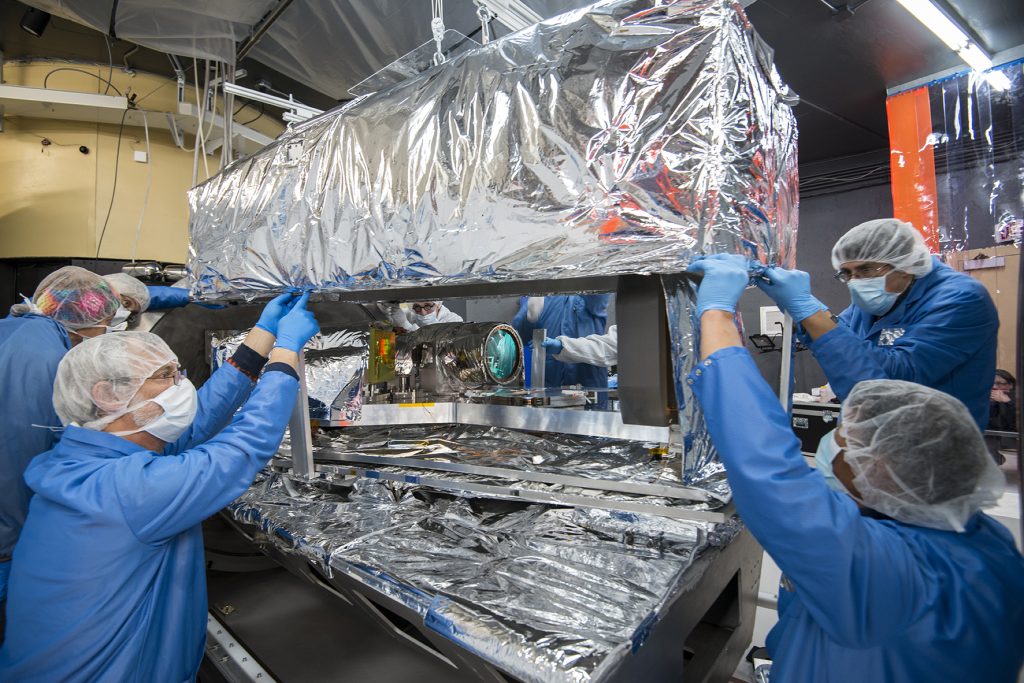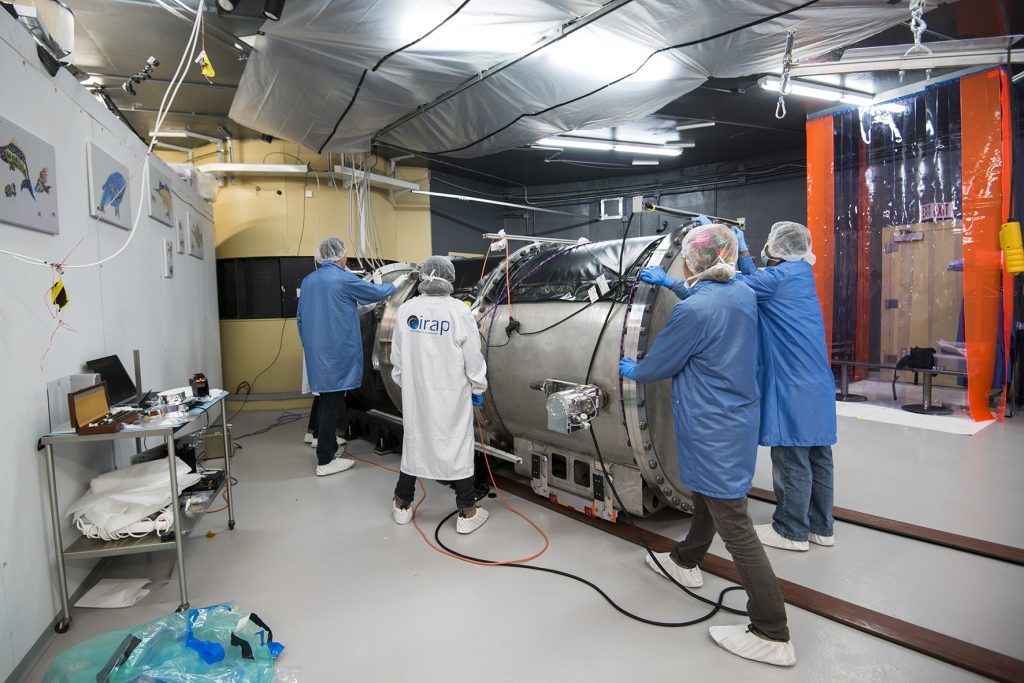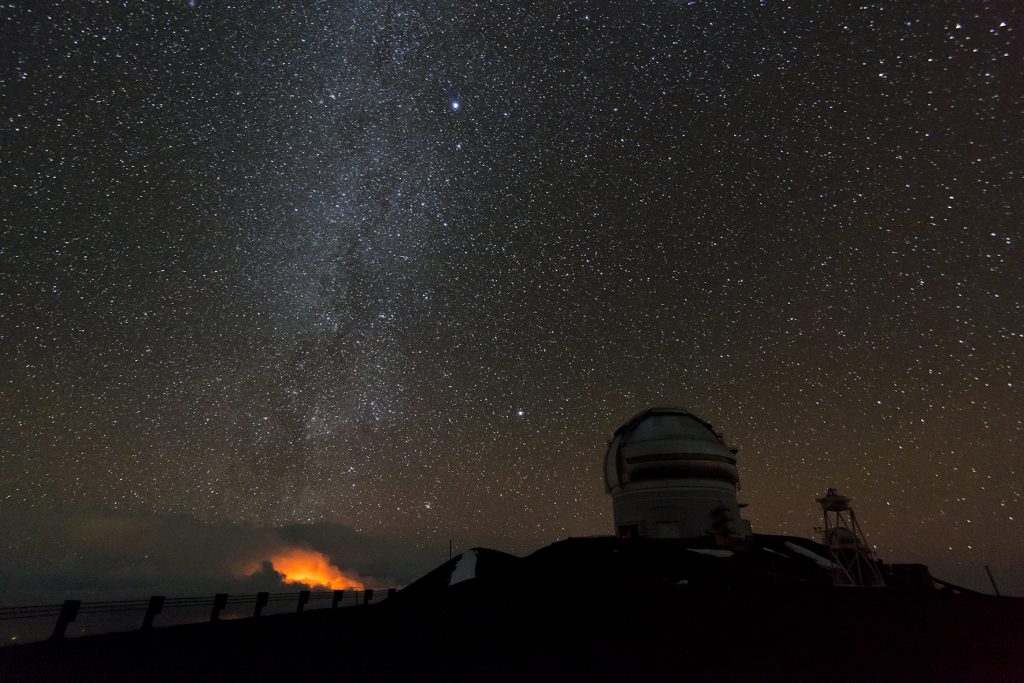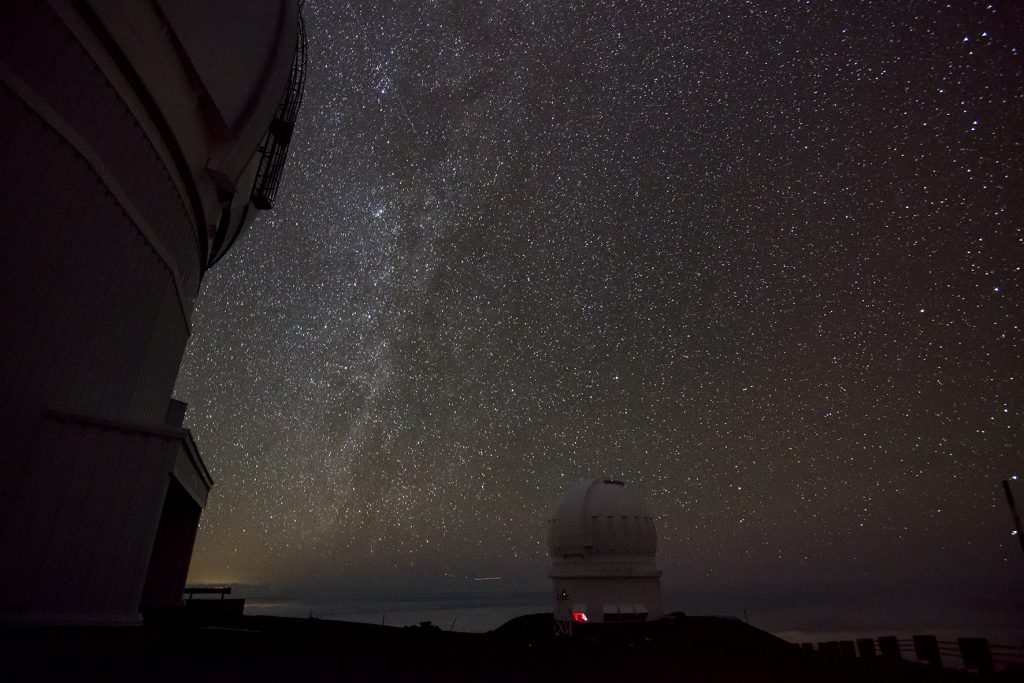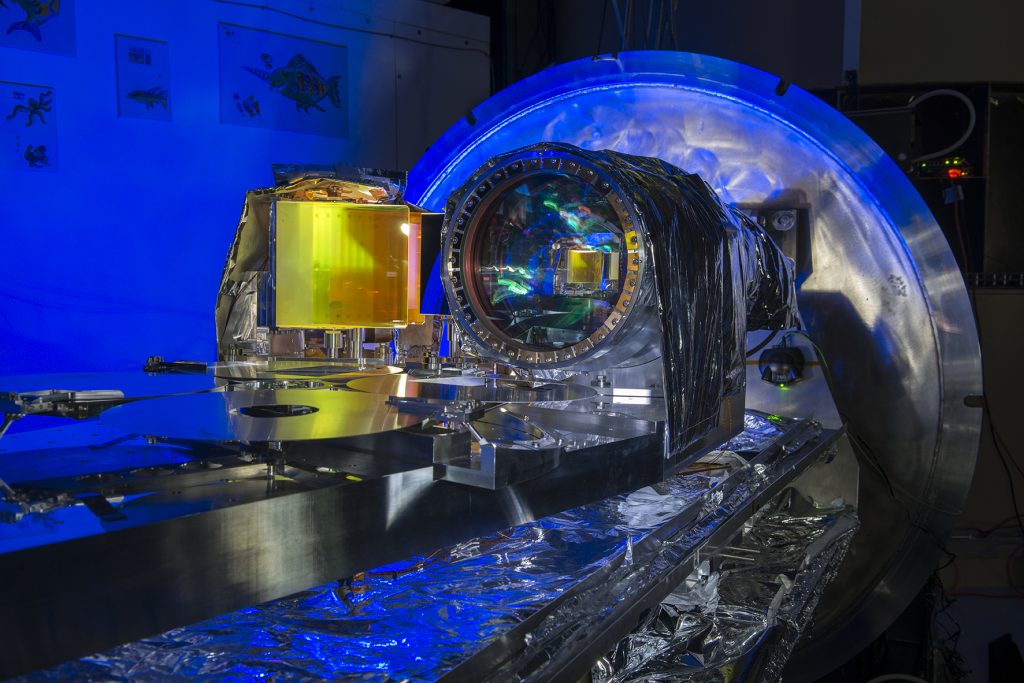2018 February: First cryogenic cycle at CFHT
SPIRou initiates on-site testing phase
With the spectrograph, the Cassegrain module and the calibration unit reassembled and realigned, SPIRou is almost ready for a new series of on-site tests. The goal of these new tests is to repeat the main validation experiments carried out at IRAP / OMP in 2018 October and November before SPIRou left Toulouse, and to demonstrate that the instrument performances are identical to what they were before shipping. This requires SPIRou to undergo a new cryogenic cycle with the test H2RG detector, prior to the arrival at CFHT of the final H4RG detector with which SPIRou will carry out its science programmes.
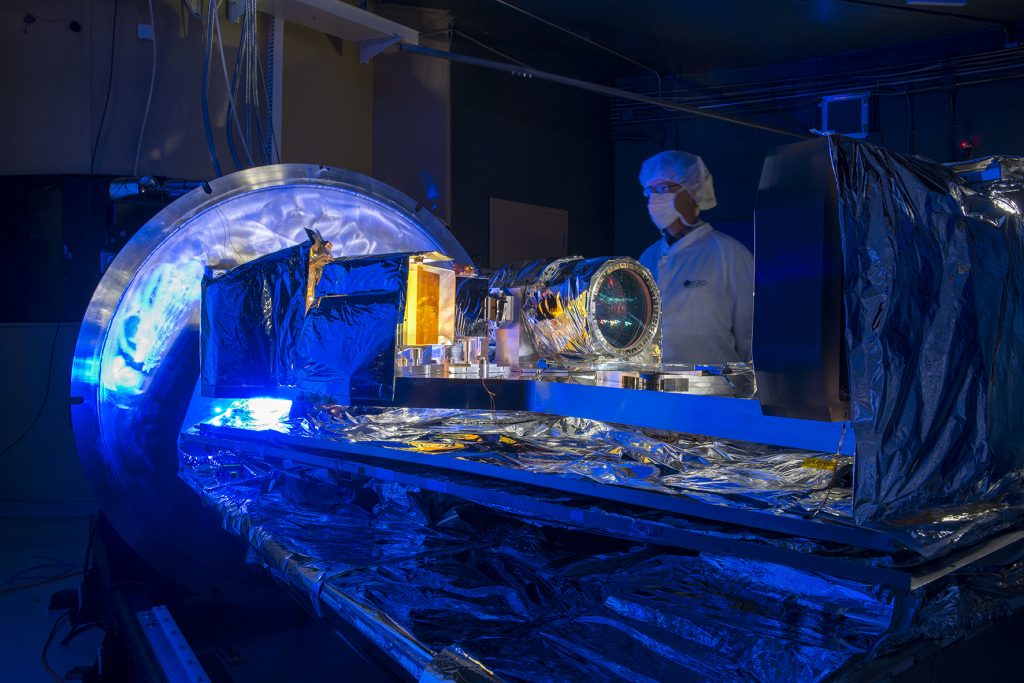
The last step of the integration process consisted in closing the spectrograph, after installing the multi-layer insulation (MLI) on all optics and the thermal sensors monitoring the temperatures of the various key components (parabola, grating, camera, prisms, bench). This includes covering all optics on the bench with the active and passive shields that will largely contribute to secure the required thermal stability (of 1 mK rms) that SPIRou critically needs to reach its top-notch velocimetric precision (of 1 m/s); in this very delicate step, the spectrograph alignement must be preserved while the optical components (in particular the fibers) must not be damaged. The spectrograph vessel is then closed and pumped until the vacuum is good enough (a few 0.1 mTorr) to start the twin compressors that will cool SPIRou down to 80 K.
The spectrograph closure was successfully completed on Feb 16, and followed by a rapid drop of its inner pressure (reaching 1 mTorr in less than 24hr). With cryo-cooling expected to start on Feb 19, SPIRou should be ready for its new phase of on-site testing by early March. Special thanks again for the CFHT team whose precious and unfailing help was key for the success of this essential step.

Two timelapse movies showing the preparation and closure of the SPIRou spectrograph prior to the first cryogenic cycle at CFHT
(© S. Chastanet – CNRS/OMP)
